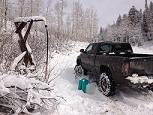Welcome To Mopar1973Man.Com LLC
We are privately owned, with access to a professional Diesel Mechanic, who can provide additional support for Dodge Ram Cummins Diesel vehicles. Many detailed information is FREE and available to read. However, in order to interact directly with our Diesel Mechanic, Michael, by phone, via zoom, or as the web-based option, Subscription Plans are offered that will enable these and other features. Go to the Subscription Page and Select a desired plan. At any time you wish to cancel the Subscription, click Subscription Page, select the 'Cancel' button, and it will be canceled. For your convenience, all subscriptions are on auto-renewal.
- Replies 37
- Views 8.3k
- Created
- Last Reply
Top Posters In This Topic
-
 Mopar1973Man 8 posts
Mopar1973Man 8 posts -
 ISX 7 posts
ISX 7 posts -
 dripley 7 posts
dripley 7 posts -
 cumminapart 6 posts
cumminapart 6 posts
Featured Replies
Did This Forum Post Help You?
Show the author some love by liking their post!
Welcome To Mopar1973Man.Com LLC
We are privately owned, with access to a professional Diesel Mechanic, who can provide additional support for Dodge Ram Cummins Diesel vehicles. Many detailed information is FREE and available to read. However, in order to interact directly with our Diesel Mechanic, Michael, by phone, via zoom, or as the web-based option, Subscription Plans are offered that will enable these and other features. Go to the Subscription Page and Select a desired plan. At any time you wish to cancel the Subscription, click Subscription Page, select the 'Cancel' button, and it will be canceled. For your convenience, all subscriptions are on auto-renewal.


There was a post about this and I wanted to really dive into it and see everyones opinions and stuff on the issue. So it is 0F out and you go out to your truck and fire it up. From the way most sound at 0F, you will surely wait 30 seconds before doing anything else. But after that, then what is best to do? Here is my theory. When you start the engine, the first thing to get warm is the piston. It is aluminum and in direct contact with the explosion above it. The next thing would be the exhaust valve though it's composition would resist it. Then I think the rest would be relatively uniform. The thing I see here is that the piston would be hot and therefore expand. The cylinder walls would have 0F coolant rushing past them and being steel they would not be heating up much at all. Therefore, I think this accelerates wear on the rings until the cylinder walls reach operating temperature. While idling, the engine is really not making much heat. I can idle mine for 10 minutes and be lucky to hit 80F from 0F. If I waited for 100F before I left, it would be idling a longgg time. Over the course of this duration, how much wear am I causing?On the other hand, what if I started driving after that 30 seconds, not hard, just putter out of the driveway and slowly get up to 55mph (I live on a highway). This would make it heat up faster, but would the shorter duration make up for the cylinder strokes? After all, it would be turning 1600RPM or something instead of idle speed.. Seems doing this would be more likely to polish the cylinder walls, ridding them of the crosshatch. My EGT's are also very high on a cold engine at 55mph, scratching 600F. A warm engine is barely over 400F. So it is producing more heat but is it worth the wear of whatever it is wearing that is making the engine so hard to turn which makes me give it more fuel and the EGT's show the load. I'll get some interesting calculations up in a bit. I believe driving is better on it, but I am not sure, that's why I am posting this...